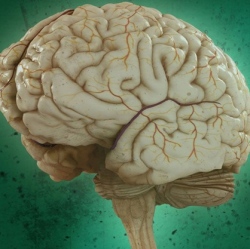
The FDA has approved an investigational new drug application for Tumor Paint BLZ-100, a protein-linked dye that highlights cancer cells in images so surgeons can precisely target brain tumors. The move means Blaze Bioscience can proceed with a clinical trial in Los Angeles, Queensland, and other sites.
Twenty-one adult patients who need surgery for often-deadly glioma brain tumors are expected to enroll in the study, which is aimed at examining the safety of injecting the BLZ-100 molecule into the bloodstream, where it rushes to highlight cancer cells. The molecule was discovered and first developed by researchers at Fred Hutchinson Cancer Research Center, Seattle Children’s Hospital, and the University of Washington. BLZ-100 may be especially beneficial for patients whose cancer might otherwise be difficult for surgeons to see, and remove, said Heather Franklin, president and CEO of Blaze Bioscience. It may help solve a long-standing problem in medicine: how to identify tumor cells so surgeons don’t remove too little, leaving disease behind, or too much, removing healthy tissue.
Tests of the compound in skin cancer patients in Australia are ongoing, she added. This first product based on Tumor Paint technology is a molecule that consists of two parts: a chlorotoxin protein that penetrates tumor cells and a dye that glows under near-infrared light. “We believe it binds to a target protein on the surface of cancer cells,” said Jim Olson, M.D.. a Fred Hutch pediatric brain cancer expert who pioneered the notion of targeting tumors with fluorescent dye to help surgeons distinguish healthy cells from malignancies. “We believe (the target) is not present on the surface of normal cells.”
